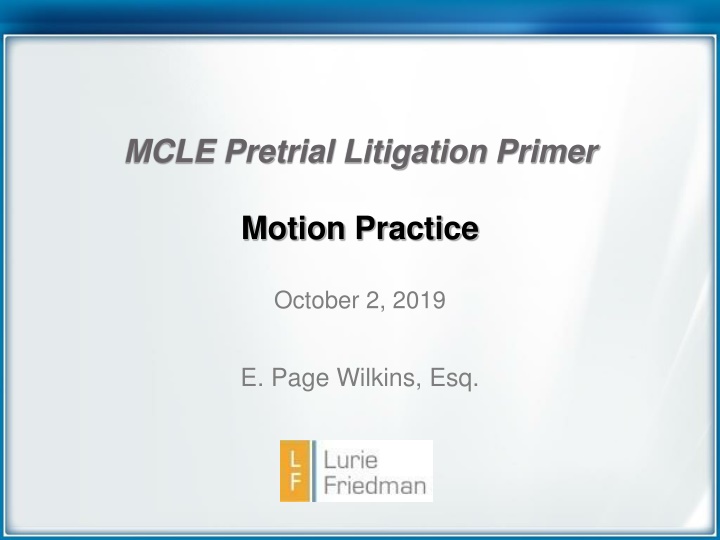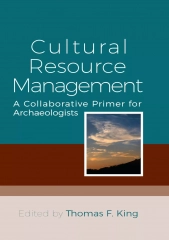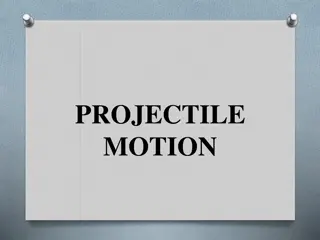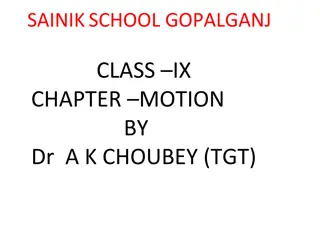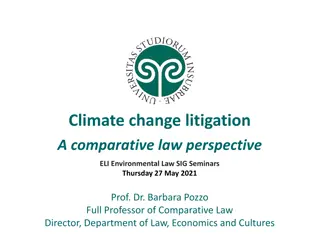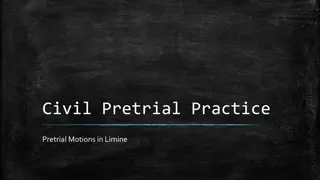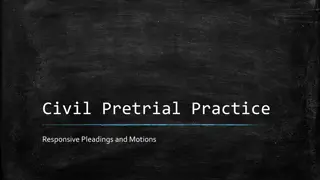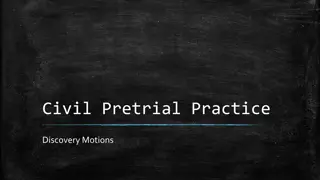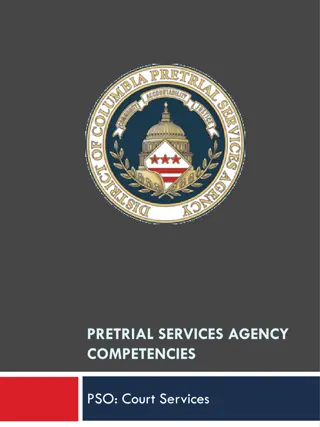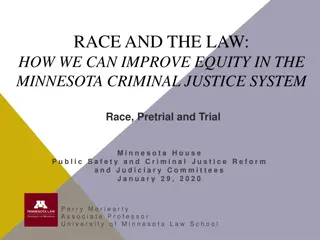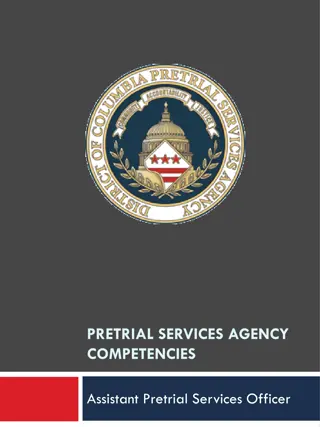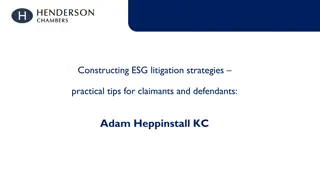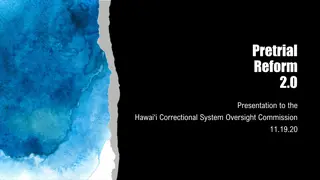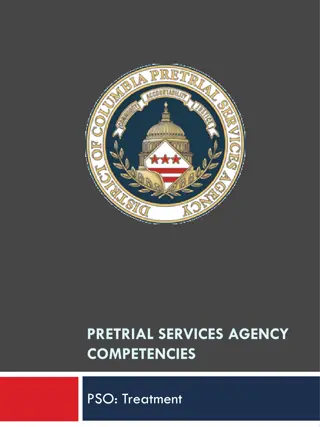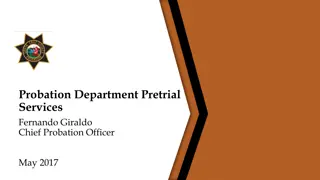Pretrial Litigation Primer: Motion Practice Guidelines
Learn about the essential aspects of motion practice in pretrial litigation, including the types of motions, format requirements, and effective presentation strategies. Understand how to draft motions and oppositions effectively, using key components like introduction, facts, arguments, and conclusions. Enhance your legal skills by mastering the art of persuasive writing in legal documents.
Download Presentation

Please find below an Image/Link to download the presentation.
The content on the website is provided AS IS for your information and personal use only. It may not be sold, licensed, or shared on other websites without obtaining consent from the author.If you encounter any issues during the download, it is possible that the publisher has removed the file from their server.
You are allowed to download the files provided on this website for personal or commercial use, subject to the condition that they are used lawfully. All files are the property of their respective owners.
The content on the website is provided AS IS for your information and personal use only. It may not be sold, licensed, or shared on other websites without obtaining consent from the author.
E N D
Presentation Transcript
MCLE Pretrial Litigation Primer Motion Practice October 2, 2019 E. Page Wilkins, Esq.
Motions 2 2 A mechanism to request that the court take action or enter an order. If you want something from the court, this is how you ask for it. There is no set list of motions.
3 Form of Motions and Oppositions
Form of Motions and Oppositions 4 4 You need: Motion, Memo, Affidavit and Exhibits Motion: Short document summarizing what you are requesting. Memo: Separate document stating reasons, with supporting authority, why motion should be granted. Include: TOC/TOA, Introduction, Facts, Argument, Conclusion, Request for Relief Well-Organized and Persuasive
Form of Motions and Oppositions (cont.) 5 5 Introduction: Win your reader in your introduction. Explain the factual context, the issue and your conclusion.
Form of Motions and Oppositions (cont.) 6 6 Facts: Use the facts to argue your case. Facts win cases. Be persuasive: Tell the story in a way that is helpful for your argument. Include enough background for the judge. Remember the judge doesn t know your case as well as you do. Include procedural history if necessary for the argument.
Form of Motions and Oppositions (cont.) 7 7 Argument: Your argument should be well-organized and concise. Put your most important argument first. Conclusion/Request for Relief: Make it clear what you are asking the court to do.
Form of Motions and Oppositions (cont.) 8 8 Use Headings & Sub-headings: Headings provide the reader with an outline of your arguments. Make your headings persuasive. Footnotes: Useful for minor arguments Side-note/explanation Distinguishing cases
Form of Motions and Oppositions (cont.) 10 10 Cases: Use SJC & Appeals Court cases when you can. Don t be afraid to include other state cases if you have a unique issue/fact pattern. Read the ENTIRE case. Include helpful parentheticals/case illustrations that explain facts/law similar to your case. Shepardize!
Form of Motions and Oppositions (cont.) 11 11 Opposition: Well-organized and addresses points in motion (can be in your own order or in footnotes if appropriate). Use same form as above. Distinguish cases cited in motion. Writing Style: Use your own style but stick with: Plain English Concise Not repetitive Clean same fonts/format for headings, no typos, consistent definitions Edit, edit, edit!
12 Service and Filing
Service and Filing 13 13 Rule 9A: The moving party serves a copy of the motion and retains the original to file upon receipt of opposition. Opposing party serves the original opposition and one copy within 10 days of service of the motion (21 days for summary judgment motions). Moving party must file the original motion and the original opposition(s) within 10 days. Moving party prepares notice of filing.
Service and Filing (cont.) 14 14 Rule 9A (cont.): Memo: Must include memorandum of law and affidavit to support any facts. Rule 9A(a)(1). Replies: Reply memorandum not to exceed 5 pages may be filed [w]here the opposition raises matters that were not and could not reasonably have been addressed in the moving party's initial memorandum . Rule 9A(a)(3). No Opposition Served: If the moving party does not receive an opposition within 3 business days after the deadline, the moving party may file the motion with an affidavit stating (1) that Rule 9A was complied with; and (2) the opposition was not received within time permitted. Rule 9A(b)(2). Must request a hearing. Rule 9A does not apply to ex parte or emergency motions.
Service and Filing (cont.) 15 15 Rule 9C: Counsel Must Confer: Rule 9C requires that counsel for all parties confer before serving a dispositive or discovery motion Certificate:
16 Types of Motions
Types of Motions 17 17 Preliminary Motions Discovery Motions Dispositive Motions Motions to Dismiss Motions for Summary Judgment Miscellaneous Motions Pretrial Motions
18 Motions for Summary Judgment
Summary Judgment 19 19 When and why should you file? Prepare for SJ during discovery.
Summary Judgment (cont.) 20 20 Rule 9A: Specific content and form requirements: Statement of Material Facts: material facts in numbered paragraphs with page or paragraph references to depositions, answers to interrogatories, responses to requests for admission, affidavits, etc. Must also provide a copy in electronic form by email to all parties. Response to Statement of Material Facts: provide response to each paragraph of moving party s Statement of Material Facts with reference to depositions, answers to interrogatories, responses to requests for admission, affidavits, etc. Creates a single document for the court.
Summary Judgment (cont.) 21 Joint Appendix: All exhibits to the motion and opposition must be filed as a joint appendix. The appendix must include an index. The moving party is responsible for assembling, with the cooperation of the opposing party, the joint appendix and the index. Timing: The original and copy of the opposition must be served within 21 days of service of the motion. Reply Briefs: See above.
Summary Judgment (cont.) 22 22 Practice Tip: Procedural Order of the Business Litigation Session Regarding Partial Dispositive Motions Prior to serving a partial motion for summary judgment, a motion to dismiss, or for judgment on the pleadings addressing some but not all of the claims, counterclaims or cross claims: The moving party must confer with all other parties concerning the benefits and costs of such a motion, its scope and effect on the balance of the litigation, and the time needed to prepare, argue and decide the motion. The moving party (or all parties by agreement) shall request a status conference with the Court to discuss the proposed filing of the motion and whether it will materially and substantially advance or reduce the scope of litigation. If the partial motion is permitted, the moving party must include a Certificate of Compliance with the motion package.
Miscellaneous Motions 23 23 Motion to Stay Discovery Pending Motion to Dismiss Motion to Quash Subpoena/Protective Order Motion to Strike Motion for Reconsideration For cases in BLS see Formal Guidance of the Business Litigation Session Regarding Motions for Reconsideration. Such motions can only be filed when there has been an intervening change in the law, newly discovered evidence that was not previously available, or a clear error of law. Motion to Exceed the Page Limit: Motions to exceed the 20 page limit may be made by sending a one page motion to the session clerk setting forth the number of pages requested and reasons why 20 pages are insufficient. Rule 9A(a)(6).
Oral Argument 24 24 Prepare! Create an outline. Be prepared for best and stickiest issues. Think about what opposing counsel will argue and what court may press you on. You don t need to argue every point in your papers. Lead with the best argument. Answer the judge s questions. Listen! Know when to sit down.
25 25 MCLE Pretrial Litigation Primer Motion Practice October 2, 2019 E. Page Wilkins, Esq. pwilkins@luriefriedman.com
